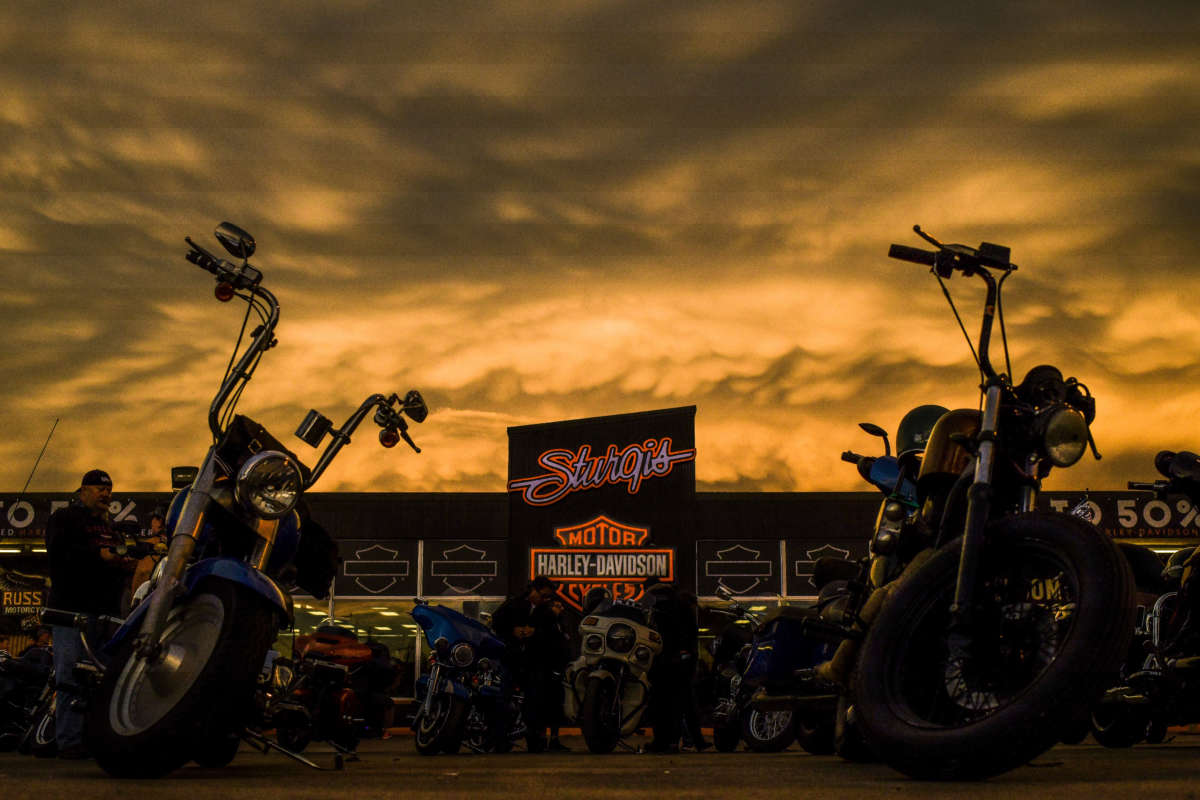The Sturgis, South Dakota, motorcycle rally that took place early last month is a coronavirus “superspreading event” that will likely result in more than $12 billion in public health care costs, according to researchers who documented the annual event.
The rally, which took place from August 7 to 16, drew in more than 365,000 vehicles this year. According to local reports, most participants did not wear masks or practice other social distancing measures to prevent the spread of COVID-19.
Likely because of the lack of adherence to such standards, at least 260 cases of coronavirus across 11 different states have been positively connected to the event, with one individual identified as having died from the disease after being at Sturgis. It’s probable that number will increase in a huge way in the days and weeks to come.
Researchers from San Diego State University’s Center for Health Economics & Policy Studies, working alongside the German-based IZA Institute for Labor Economics, analyzed cellphone data from “non-residents” at the rally to examine foot traffic at a number of establishments nearby, including bars, retail shops, hotels, and more. They found that attendance at these areas of interest “rose substantially” when compared to days before the rally, in spite of the possibility of spreading infections.
The study concluded that the event will eventually be linked to about 267,000 cases of coronavirus in the U.S. when all is said and done. Based on the understanding that the average cost of care for a person with COVID-19 is around $46,000, researchers determined that the motorcycle rally will likely result in $12.2 billion in public health costs due to spread of the virus.
The high number of individuals likely to have been infected with coronavirus makes Sturgis a “superspreading event” — an event in which cases are transmitted at a much higher rate than they happen among the general public.
A number of superspreading events that have been documented in the months since the pandemic hit the U.S. have happened at large gatherings of individuals, such as church choirs and big family birthday parties where dozens of participants have ended up contracting coronavirus.
“I tend to think of it as this: the vast majority of people may not infect any other people, and some people in certain situations infect a lot of people,” Abraar Karan, a physician and public health researcher at Harvard Medical School, told the BBC. “One person may infect 10 people, or 15 people or 20 people” at such superspreader events.
Sturgis is unique, however, in that it was a multiday event with hundreds of thousands involved, which could make it the largest superspreading event in the country so far.
Although not conclusively connected to the event itself, South Dakota saw a substantial upswing in its coronavirus case count in the weeks after the Sturgis rally was held. Indeed, the five-day average of new cases identified from August 26 to 30 was more than two times higher than it was from August 12 to 16.
As of Tuesday, nearly 6.5 million cases of COVID-19 have been identified in the United States, with more than 193,000 having died from the disease so far.
We’re not backing down in the face of Trump’s threats.
As Donald Trump is inaugurated a second time, independent media organizations are faced with urgent mandates: Tell the truth more loudly than ever before. Do that work even as our standard modes of distribution (such as social media platforms) are being manipulated and curtailed by forces of fascist repression and ruthless capitalism. Do that work even as journalism and journalists face targeted attacks, including from the government itself. And do that work in community, never forgetting that we’re not shouting into a faceless void – we’re reaching out to real people amid a life-threatening political climate.
Our task is formidable, and it requires us to ground ourselves in our principles, remind ourselves of our utility, dig in and commit.
As a dizzying number of corporate news organizations – either through need or greed – rush to implement new ways to further monetize their content, and others acquiesce to Trump’s wishes, now is a time for movement media-makers to double down on community-first models.
At Truthout, we are reaffirming our commitments on this front: We won’t run ads or have a paywall because we believe that everyone should have access to information, and that access should exist without barriers and free of distractions from craven corporate interests. We recognize the implications for democracy when information-seekers click a link only to find the article trapped behind a paywall or buried on a page with dozens of invasive ads. The laws of capitalism dictate an unending increase in monetization, and much of the media simply follows those laws. Truthout and many of our peers are dedicating ourselves to following other paths – a commitment which feels vital in a moment when corporations are evermore overtly embedded in government.
Over 80 percent of Truthout‘s funding comes from small individual donations from our community of readers, and the remaining 20 percent comes from a handful of social justice-oriented foundations. Over a third of our total budget is supported by recurring monthly donors, many of whom give because they want to help us keep Truthout barrier-free for everyone.
You can help by giving today during our fundraiser. We have 24 hours to add 200 new monthly donors. Whether you can make a small monthly donation or a larger gift, Truthout only works with your support.
